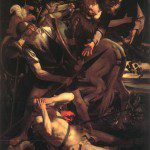(Using the Example of my Paper, “Biblical Evidence for Marian Apparitions”)

Dimensions are used as an analogy to the Holy Trinity. This is a drawing of the first four dimensions. On the left is zero dimensions (a point) and on the right is four dimensions (A tesseract). Drawing by “NerdBoy1392” [Wikimedia Commons / Creative Commons Attribution-Share Alike 3.0 Unported license]***
Link to my National Catholic Register article, “Biblical Evidence for Marian Apparitions”.
Two commenters wrote the following:
Geert ter Horst: “I’m sorry, but with my best intentions I can see nothing prefigurative of the Marian appearances in the biblical passages quoted above, let alone evidence for them.”*Will: “[The article] does not provide evidence for Marian apparitions. Perhaps that is why Catholics are not required to believe them.”
This paper is an analogical argument, and/or one from plausibility, as clearly explained in the piece: “By analogy, biblical accounts of ‘appearances’ or visions or dreams of those who have died, are of the same essential nature as a Marian apparition. . . . Several of these passages involve foretelling of the future, in a manner not unlike that of the apparitions at Fatima in 1917.” [italics added presently]
Both forms of argument are quite often misunderstood, as I know from having to explain them countless times in the course of my (now 36 years of) apologetics. Hence, Geert and Will don’t see this as any sort of evidence at all, because they don’t seem to grasp the very nature of the analogical argument. Geert doesn’t even see anything in the examples that is “prefigurative”: which I find astounding. See the Wikipedia article on analogical arguments, and also the one on “Plausible Reasoning”.
The definition for “Evidence” at Dictionary.com is:
1. that which tends to prove or disprove something; ground for belief; proof.
2. something that makes plain or clear; an indication or sign.
We use analogies in theology all the time, such as, for example, regarding the Holy Trinity. C. S. Lewis defended the Trinity (I think it was in Mere Christianity) by using the analogy of a cube: one object that had three dimensions (three dimensions yet still one shape), as opposed to a square: one shape with two dimensions, or a line: one shape in one dimension (which is how — by analogy — we are compared to the Trinity: one person for one being rather than three). He compared the incarnation of Christ to a man becoming an ant.
The Bible has lots of analogies. Jesus’ parables are examples of analogies to moral and theological principles, drawn out through the use of storytelling. Jesus talked in His Sermon on the Mount about birds being provided for, so why should we worry about whether God will provide for us? He compared the Pharisees who opposed Him to “whited sepulchres, full of dead men’s bones.” It’s all use of analogy.
So in the paper above I was drawing analogies of events recorded favorably in the Bible, that are of the same nature as a Marian apparition: appearances or visions of creatures appearing after they have departed this earth. In other words, the Marian apparition is shown to be in complete harmony with Holy Scripture, even though not explicitly mentioned in it. Many people seem to demand or require explicit, ultra-specific proof of everything in theology, even though the Bible itself never states that this is what is required to believe in anything.
















